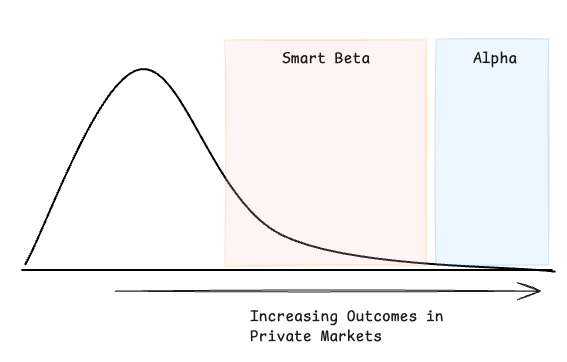
This is Not Your Mother’s Alpha
June 26, 2025
The recent flow of AI seed funding announcements, almost all at high valuations, sparked my curiosity: can investing in these deals deliver high fund returns for seed investors or are they tailored to a different strategy altogether?
Many hyped companies look attractive on the surface. They tend to have a compelling product vision, a qualified team, and a vast market opportunity. Yet, despite these qualities, are their high entry valuations too restrictive for the return profile necessary to generate outlier fund returns? Using historical data as a guide, I decided to investigate.
Plotted below are the 50x+ return hit rates of seed (& pre-seed) investments where the post-money valuation was below $20M vs. those where the post-money valuation was above $20M.
As you can see, the trend is clear: seed (& pre-seed) deals with a below $20M post-money have (on average) 280% the probability of producing a 50x+ hit as compared to their higher valued counterparts.
Why is this the case? Certainly, a lower entry valuation means that returning 50x+ is mathematically easier to do (by definition). But perhaps there’s something more. I hypothesize it’s a confluence of several factors - capital efficiency (less capital may require more scrappiness and stronger core focus), team incentives (less money could mean that equity incentivization plays a larger role, aligning the team toward a shared mission), dynamics of the business (if it takes more capital to get up and going, it may take more to continue scaling, which could dilute investors), and perhaps ego (raising money is a means to an end).
Of course, hit rates are not everything. Indeed, lower valued companies are riskier. As to be expected, if one looks at the death rate (companies that have failed to exit or raise additional capital for 3+ years) and exit rates, investments with above $20M post-money consistently die less, and their tendency to exit is higher (but keep reading!)
Why might this be the case? The intuitive reason is these companies tend to have very strong teams and are typically better capitalized toward finding a sense of product-market fit.
However, even with this factored in, the mean return multiple of the lower post-money cohort is still far higher than the mean of its counterpart (the mean is mostly driven by outliers).
In fact, the higher valued seed deals actually resemble a $50M+ post-money Series A return profile as it relates to 50x+ hit rates. And the risk of failure at seed is higher than at Series A.
In summary, while there are still amazing outlier investments to be made in this $20M+ post-money seed deal cohort, the strategy may not make sense for a seed fund’s portfolio construction. If you’re a seed investor and looking at deals with post-money valuations above $20M, although there may be social benefits to participating in these deals, think carefully about whether that check is the best use of your finite capital toward generating outlier returns.
Potential counterarguments: